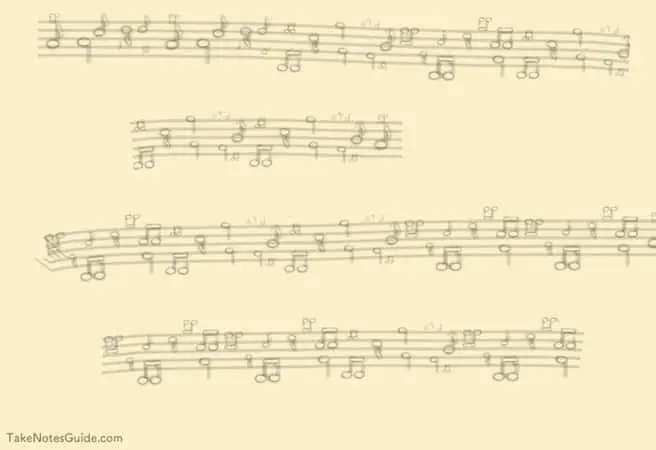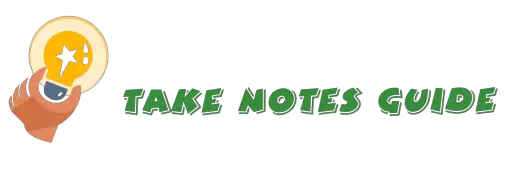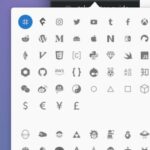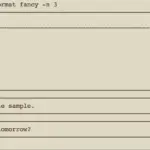Are you actively making mental associations and sense of the point taken in relation to other parts while typing and writing? Are you engaging with that note like it is alive or exhilarating? Is your act of taking notes just to record on paper without much mental effort? And how many times do you review the note to the point of drilling in mental memory?
How to memorize your notes?
- Understanding with persistent contemplation
- Understanding with different activities
- Keep summary meaningfully short for reviews
- Overwrite to bold the keywords and points in the book
- Put in dialogue form
- Start from a relevant picture
- Finger tapping patterns
- Mind Shopping Complex
- Family pictures
- Location in notes
- Logical association
- Spaced Repetition
- Rote learning
Taking notes to remember can be counter-effective according to some studies or research. While some may argue writing by hand will be beneficial for memory. A study on Intentional Forgetting, (Eskritt & Ma, 2013) shows that a note-taking group actually remembers less than the study group. I would assume the study group means some sort of understanding is achieved while the note-taking group focuses on taking notes as in transcribing what is going on. So my recommendation is to understand and understand well the materials before any note-taking. Drills and rote learning can work in tandem but nothing can substitute for logical understanding. Explore these ways designed to make your notes more easily remembered.
Understanding with persistent contemplation
I believe understanding is possibly one of the best ways of taking notes to memory.
Once we understand a matter or situation well, we depend less on the hardcore way of repetition for memory to recall. We can better our understanding of the matter via remembrance with recurring contemplation. It is hardly possible to keep a poor note for someone who often reflects upon it.
When we reflect back, there are at least two purposes. One, we are more likely to realize the faults and flaws of our notes, and make amendments to mistakes or include what we missed out on before. This is akin to proofreading. Second, we can improve in the aspects of the notes and our note-taking skills. Perhaps we realized we can organize differently in a way we never thought possible, or apply a new way of note-taking technique.
One may simply choose to contemplate the topic of learning whenever he or she is free and available.
Understanding with different activities
- Can the notes be made into a game? Please read Top 9 Fun Activities For Note-Taking for some ideas.
- Assign points to notes or sessions reviewed like Memrise?
- Roll a dice and associate a pre-assigned card or game objects with your note
- Partner up with someone who had studied to play a game of test to see who understands and remembers more of the notes
- Insert your notes into a short story you liked, read or watched recently
- Create your own quirky or creative story from the notes on hand
- Can your notes be filled with action and excitement?
- Visualise your notes go from the start with point one, and how it connects with the next point and so on till the last in a chronological and meaningful manner. Re-arrange the notes if you have to. This ‘linked-list’ concept of note-taking can be a powerful way to study for remembering a list of information.
- Start each section of your notes with a question. Each section may be placed on a flash card and the cards placed around the house as random reminders.
The purpose of these activities’ engagement is to make the notes more fun and interesting. We are more inclined to understand more and take notes to memory in this way.
Keep summary meaningfully short for reviews
For students, did you notice how very much a lecture or book or video can be summarised into just a few key sentences or paragraphs, or bullets? If you cut out the noise and fluff, you will realize all you need for those important takeaways can be just a few ideas to understand and remember. It is entirely possible to sit through an hour of lecture or video for just that one or two main important points that can be taught in just under one minute. You might have heard of learning to take notes by listening for keywords. When distracted bring your attention back to listen up for ideas new to you and decide if it makes your important list.
Keep another note for the information you are unsure of its usefulness. Important list noting will clearly work even better after having gone through the text or information once or twice beforehand and the lecture is a review.
Ask your friend to do an audio or video recording with permission if you cannot attend. Please do not just prettify or copy tons of information without understanding, or take notes just for the sake of taking notes.
Genius note-takers should have short insightful notes (physical or mental) that are exceptionally spot-on answers by intuitively predicting possible exams questions e.g. 80% & above accuracy. We are not human photocopier machines, nor should this be the goal.
On the contrary, keep your class notes meaningfully short and sweet like nailing a song or heart-wrenching poem. Be human. Develop this habit: Quickly study your book in under 10/20 minutes to note 1-3 main points & 1-3 what you do not understand at home and at least 30mins again before the class/lecture, listen for these ideas or keywords when the lecturer speaks or even ask questions online or in class. You must clear your doubts. Flashcards style is good and reviews at least one more time a month or week before exams. These habits may help to get you through exams with ease.
If there is too much information to note down or unfamiliar ground to cover, then in the first round of note-taking, you may note down anything new or even everything (preferably when you are alone studying the textbook chapter the day before the lecture for example). The second round of notes will be a concise built-up summary and new realizations from the first round (perhaps taken during lecture).
Unless you have anything to add or difficult parts you have to sort out, this second set of notes can be your review set for memorization. Though I would highly recommend making your notes exceptional, fun, imaginative, and applicable to everyday life for your third set of notes (we should keep in mind the purpose of studying).
Overwrite to bold the keywords and points in the book
Make a conscious effort to write over the key points. We are more probable to remember the points because we wrote by hand in the text. Plus textbooks have a layout and possibly pictures that make the key points stand out in relation. Also, one may repeatedly trace or write over the same points to help memorize.
If you have diagrams, equations, figures, tables, or codes, experiment with also writing over or tracing them, and ponder over their significance while you are doing it. The extra effort may help you to understand more than before, or at least have the chance of leaving impressions that never would have without these little exercises, plus they are all bolded for reviews.
This may also prove useful as part of rote learning; Those who have trouble understanding a topic may deploy this hard way of learning with brute force: Writing over and over again in the hope of getting it. Not everyone learns the same way, as long as it works for you or someone please consider applying it.
Write in different colors to differentiate various types of notes if you wish, but my recommendation goes to the mental effort of mainly understanding well the topic matter first. If you often find yourself changing your mind about where you should have colored the words or points after studying the whole chapter and reviews, then perhaps you should hold off coloring the first time you study the text until later.
Put in dialogue form
Talking with others is one of the most common activity we can engage in, and undoubtedly one of our best memories can be what someone said to us that we remember for life. So I urge you to give this a shot, put your note in a spoken dialogue form, perhaps quote what your lecturer said or arrange the notes in a dialogue to tell a story.
Perhaps a book of ten chapters may have 2 chapters or more of notes in dialogues form to see how it works out for you. Or you may intersperse among other common notes. If you like to learn a captivating way of writing dialogues, consider learning from Sidney Sheldon’s “page-turner” or “cliff-hanger” style books (affiliate link) where he put dialogues to effective use. An idea would be to just associate one chapter of notes to a dialogue page of a novel. Or just write the notes in the way as if your family are speaking with each other in the living room, pulling content from this morning or last evening’s conversations. Notes of this nature are more personal and intuitive, and this can be advantageous to taking notes for memory.
A simplistic example:
“Why not O & CO2? After all, it’s just airy symbols.” – Sister
“Be specific. Carbon dioxide and Oxygen.” – Dad
“Calm down, everyone. Photosynthesis will transform carbon dioxide into oxygen.” – Mum
Start from a relevant picture
Prepare a picture before the next note-taking session, the more relevant to the topic the better. All the better if the book chapter has an illustrated picture or diagram ready.
- Pin the picture to the top of the note, much like a feature image for a blog post.
- Focus on how the picture or diagram may relate to the notes. Look through the image and examine the details before starting to read the text.
- Observe what you do and do not understand first. Note down your observations, the more the better.
- Start reading through the text and put a tick next to your observation notes for confirmation or answering your doubts.
- Notes unrelated to the picture placed on a separate page, but relate back directly or indirectly to the picture.
For example in the picture, if there are two people speaking to each other, you can hear them talk about the notes. If there is an advertisement board, the notes will be displayed there. If there is a newsstand there, the paper’s front page will show your notes. If there is a statue there, the tablet will describe your note. If there is a garden or greenhouse, the flower patterns will decorate your notes or the plants are tagged with notes. If there is a radio or smartphone, it will play your notes, etc.
Relate or associate the notes with your picture, a relevant and detailed one if possible. Also, an interesting photo can grasp your attention more firmly. This way of taking notes to memory may work well for those who prefer learning visually. Moreover, this way of remembering is quick, intuitive, and builds confidence by starting with the right picture and zooming in for the notes.
Alternatively, insert the picture in the middle of the page and all your notes go around it, attaching to any meaningful parts.
The idea is to start building everything in the text from this single reference point – a relevant picture, like a town spreading out from the tavern or main road.
Finger tapping patterns
Not only piano and guitar player you can also use fingers to create tapping patterns with varying speeds to make the worded notes more memorable by recording the tapping sounds and attach to that note. And how your fingers move should also register a connection with that note thereafter. Associate a certain music pattern or chorus with a note will be fun. The fact that people can play complex tunes on piano and guitar with fingers means that ‘finger memory’ is definitely possible.
There are 2 ways with this:-
One – Assign a musical note or do-re-mi-fa-so to each finger, and each note should have a unique or related note pattern. Perhaps this will be helpful for those playing by ear.
Two, assign numbers 1-2-3-4-5 to each finger and associate a number with each note you take. When you tap your fingers in your free time, you can practice remembering each note you took. You can even tap just ONE finger following the melody.
A note-taker may improvise this method with drum beats as well, as long as one enjoys learning different beat rhythms whilst linking to different notes.
If you cannot recall it that means you should refer back to your tune and notes again if that’s important to remember. But it would be more fun to assign a catchy melody we all can remember to a note taken don’t you agree? And there are plenty of catchy tunes to go around learning and practicing. This is an advantageous way to remember notes for the musically inclined. I believe most or anyone should have some aptitude for music even if he is not an accomplished composer or an operatic tenor.
The goal here is the more you think of this written note through rhythm or otherwise, chances are you will understand it better and update to improve it, like playing by ear.

Bonus
On a side note, did you know that not just Chinese, but Japanese also leverage the power of the traditional abacus (and a modern mental version) for memory, mathematics, and concentration? It is quite amazing to see how someone can calculate a series of 15 numbers flashed in just one point five seconds! A parent was also surprised by how fast her daughter can memorize things for examinations, she believed that is because she learned how to concentrate.
Mind Shopping Complex
An adaptation of mind palace that can work better if you are familiar and fond of a huge place such as a shopping mall or palace you had been to. A shopping complex or mall can be a good choice for those who shop or hangs out there, there are numerous objects for detailed associations with notes. Take a shop photo with permission as a reference if you wish.
Each shop or palace room can have so many objects of interest. Base fiction on non-fiction. Every shop or room object can hold an associative meaning for a particular note. For example, a pharmacy shelf of ointments can have your annotated associative notes lined up in left-to-right and top-to-bottom order.
Other alternatives include a zoo or botanical garden of multiple plant and tree species or your favorite street or even a supermarket are possible as long as you can remember the details.
Family pictures
This is not only for jogging memory but writing a note of a more unique quality that holds a dear place in our hearts i.e. Place that beautiful note by your grandad’s photo. Or put it into a collar holder for your beloved dog curled near the warm fireplace, contended and protected from the cold snowy winter. Can you forget such a note or the meaning it holds for you? This can be a way of writing a better, more meaningful note. Once you made that note this special, it’s only natural you will want the best of it.

One may reserve such photos for important chapters or favorite subjects. Perhaps it is time to take out your family album.
Another option is to tell a story with google maps and some photos you had taken on your visits and tours with friends or family. Notes can be placed on a private, customized Google map.
Location in notes
When you have a realization or some ideas (and good ones can come at any times of day and night) you wish to note down but you do not have your notebook with you, what do you do particularly if many came quickly? Well, think or visualize the relevant note you have written or typed, think of where you should insert these words, or just at the end of the note so it can help you recollect them. In fact, this is helping me to write this point so it sees the light of day. Make the note better with more ideas. Adding this way to the same note forces you to recall repeatedly so the mental link will be stronger for memory.
For example, near the beginning of your page of notes, you may think of inserting the word “Selenium”, three-quarters down the word “Bromine” and “Titanium” near the end. When you open up your note, expand on these 3 words on the note to make sense.
One may also just memorise a string of words for later insertions into a note, but I recommend note spatial placement in addition to words pronunciation to serve for stronger memory linkages. This memory technique is not only applicable to writing a note but to quickly form the structure for writing a long exam answer as well.
Logical association
This is one of the most natural and perhaps easiest way to remember. When we listen to an interesting story, we usually may recount the sequence of events leading up to the ending, especially those that we felt a deep connection or similar predicament.
For an example to help us remember Iron Oxide (Fe2O3), the element Iron has a similar name to a schoolmate named Iro for Iron(26) and she also has a long relationship with her boyfriend, Oz for Oxygen(8); Their disagreements leaves a rusty (Iron Oxide) taste in the mouth. In general, a more meaningful association will be better for memory.
Spaced Repetition
This is good for drilling in long term mental and muscle memory, like a language or swimming. The disadvantage of drills being dry and uninteresting after reviewing again and again. This is similar to rote learning but done at specified, intentional intervals. The science explaining this can be found here. Please read this answer for spaced repetitions schedule.
Memrise offers a number of languages and other subjects for learning, including those created by members themselves. I would recommend courses created by the Memrise team. The advantages with Memrise are the points system with statistics that enable the learning like a game for students and the systematic learning designed to use with more ease that encourages short or flexible review sessions. Free subscription should suffice for any average Memrise learning.
Alternatively, Harvest.li can provide email reminders for spaced repetition learning. Let’s Review | Study on Google Play is also designed for revisions to this purpose.
Evernote also has the option to set reminders manually.
Rote learning
Keep repeating even when not understanding much. This may be even drier than spaced repetitions, however, it indeed can work under certain circumstances. In fact, some cultures such as Chinese and Japanese certainly put great emphasis on honing performance with practised repetitions. Rote learning can work well for certain subjects and purpose such as basic mathematics, language learning, and any other skills that require mental muscle memory such as drawing (Resources on grid drawing) and piano playing. Simply put, one just need to keep repeating the same words or action over and over again until one memorise it well. I believe understanding and realisation can come later if one keeps at it.
With the advent of modern technologies, we may employ new ways to assist in our rote learning experiences. For example, we may read aloud repeatedly certain paragraphs or text, and paste that text over at TTSREADER to read out the text any number of times back to us (For repeated listening). This may also be beneficial for those who wish to learn a new language accent and students keen on improving listening comprehension skill. An alternative is Quick Voice Translator / Google Translate (Android apps). The combination of both reading aloud and listening repeatedly may prove to be even more effective for rote learning.
An example recording to repeatedly play text/notes for rote learning. This is recorded with DU Recorder on an android phone before uploaded.
Why does rote learning works?
We are taught basic words that we do not yet understand even when we are infants. We might have forgotten how we acquire knowledge at a toddler, but this ability or capability remains with us. Like the abacus method mentioned above, it takes hard work and lots of practice to attain proficiency in our endeavors.
Bonus Tip: Keep it clean and neat
Sometimes keeping it clean and neat can change the mood and ambience, and possibly help us to unclutter our thoughts and remember only what is important.
Conclusion
Engagement is key in my humble opinion, for both understanding and memorization, and even drills and rote learning are rudimentary engagement exercises. Some may also prefer to prettify their notes with fonts, colors, stencils, highlighters, separators, and so on to increase visual appeal; A popular and social way for sharing notes. Though I would think imagination expressed in the meaning of notes is far more potent, whatever your approach that suits, keep your notes meaningful and effective for your personal learning and reviewing.
It is also important to note that it is not only what note we take, but how we take that note? The more epic and striking the process or story behind it, the more we can remember it over time. That for example a plant named Orthosiphon stamineus, Cat’s Whiskers in Malay(Misai Kuching), with health benefits; Puss-in-boots camouflaged himself among some Orthosiphon Stamineus where the flowers resemble his white whiskers and avoided the bad hunters, and picked some on his way back for the recovering diabetic and cancer-stricken kids in the local hospital who always ran with joy to see him, bear hugged and stroke his long and luscious whiskers; There was always so much brimming love, like a full cup of Misai Kuching tea, with so many humans he met and adored over his life.

Examples of more memorable notes can be a photo of a beautiful white cat with different colored eyes or an exotic and uncommon fruit appearance.


Please do not just take notes just for the sake of memorization. I believe there are purposes and goals for why we are taught and told to memorize, please do not lose sight in the pursuit of it. Put in the effort to make note-taking fun and useful in daily applications. For example, there are fun science experiments that make learning memorable and how we apply for the good of others is up to our imaginative creativity. Be willing to spend time tinkering on how we can solve problems and better our quality of life with convenient and effective solutions and products.
Take the time to explore which ways work best for you, and perhaps apply one method for each different topic or purpose.
Be kind to others and good luck to understanding and memorizing your notes.
Related Questions
Is there any other training memory related study conducted?
Working memory training involves learning new skills (Gathercole, Dunning, Holmes, Norris, 2018/2019); Creative Common license with no changes made.
Are there any mind palace memory technique books for passing exams and more?
Please check out Resources.







